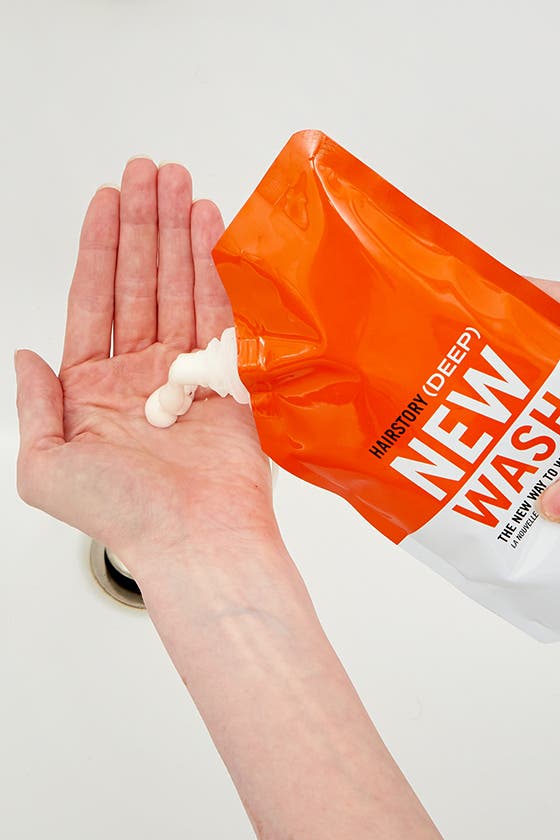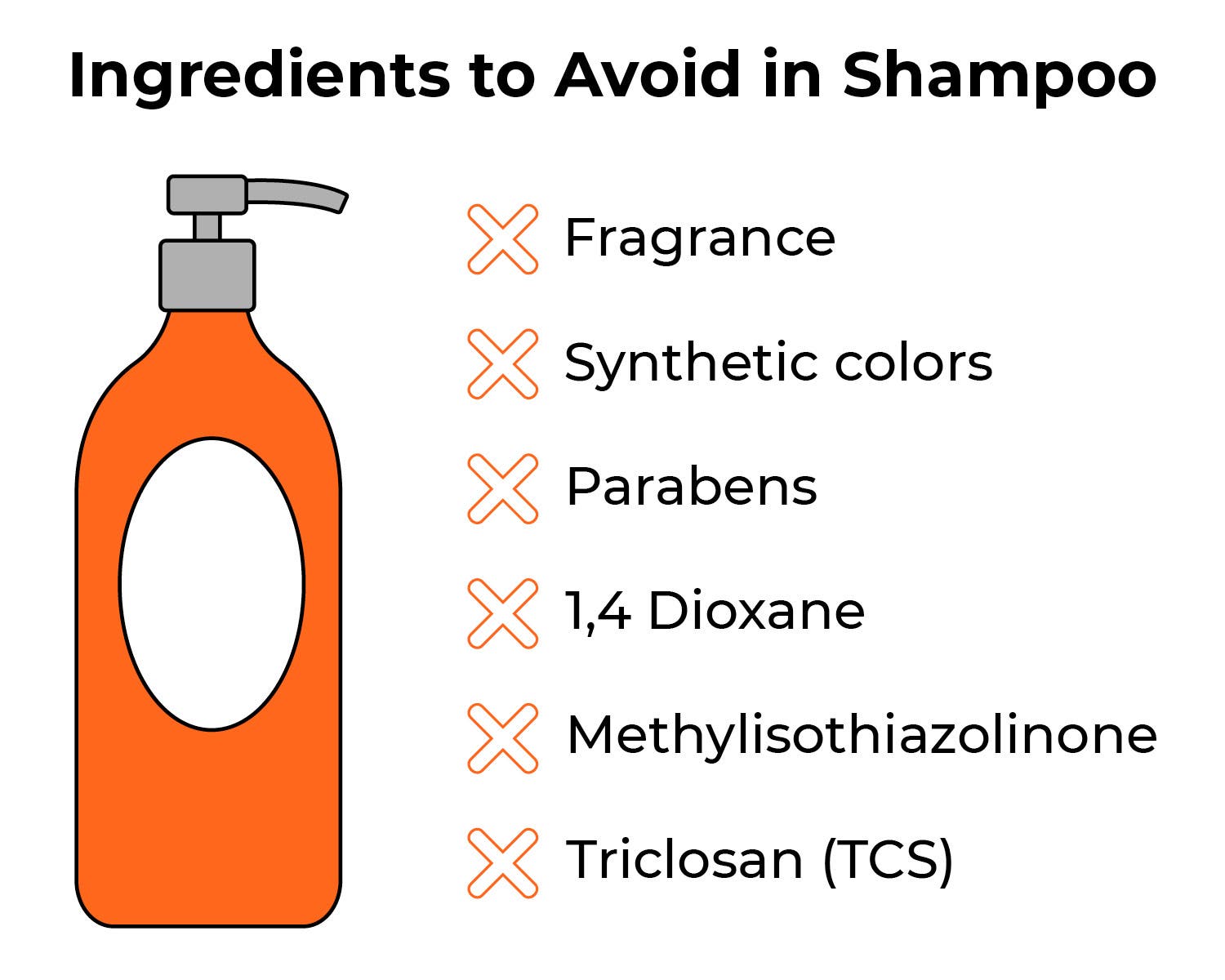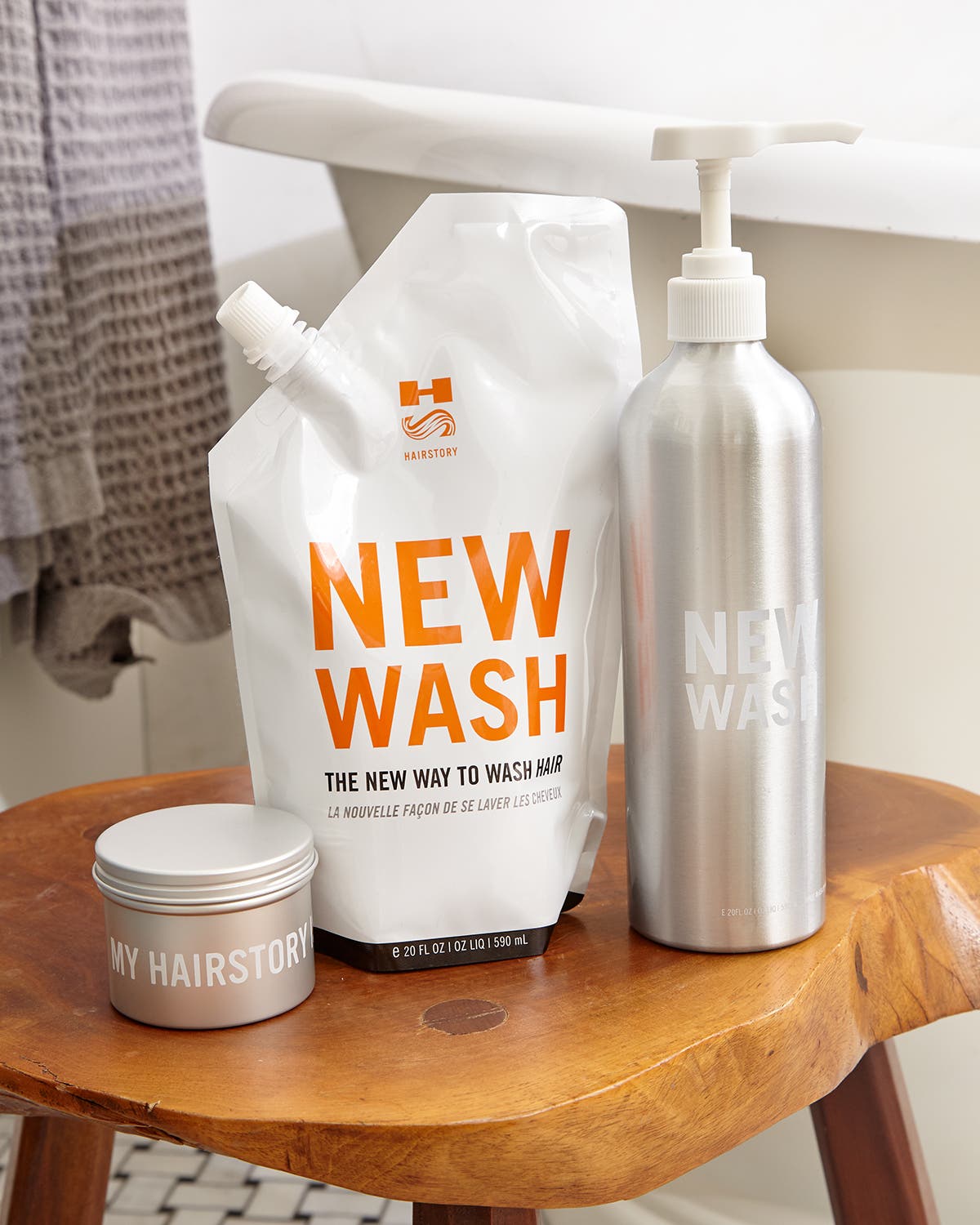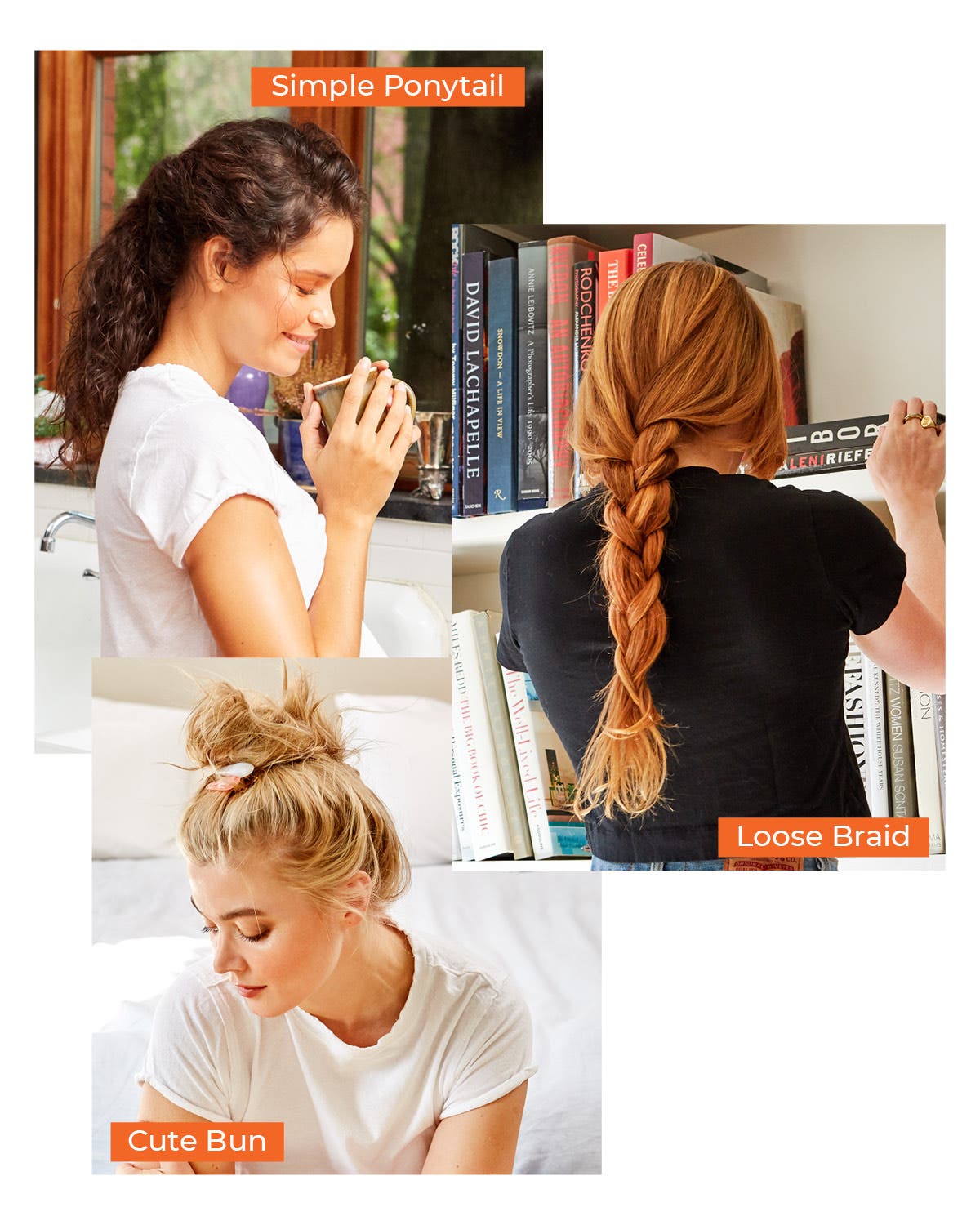How Shampoo Impacts the Environment

It’s been just over a century since the first commercial shampoo was invented by Kasey Hebert in 1914. But since that time, we’ve gone from creating a pH-balanced formula in the 1930s to creating numerous solutions that claim to prevent the damage caused by the advances in shampoo technology.
But as new inventions lead to more and more shampoos relying on ingredients created in labs, we’re getting further and further away from what’s healthy and natural. In fact, the hair industry – both commercially and individually – has created a considerable carbon footprint over time.
We know that nourishing your scalp is so important. There are easy ways to take care of your scalp like using a scalp brush to stimulate blood flow and remove product build-up. (Here are a few tips on how to exfoliate your scalp!) While caring for your scalp is an important part of any hair care routine, are we unknowingly washing our scalps with products that do more harm than good?
Shampoo's Environmental Impact
It seems innocent enough – a product designed to clean your hair. It removes the dirt and oil, leaving your hair shiny and full of life. But is shampoo bad for the environment?
Well, if you read the ingredients on the back of a shampoo bottle, you might be surprised. Many shampoos are filled with harmful chemicals you’ve never heard of and aren’t able to pronounce. These chemicals may not only be harmful to you, but they can also harm the environment. Plus, they strip your hair of natural oils, forcing you to purchase a separate, often equally harmful condition to replenish the oils you’ve lost.
In addition to harmful-for-everyone chemicals, many shampoos are sold in plastic bottles that are often only partially or totally unrecyclable. These bottles have already caused a tremendous amount of waste and done extensive damage to our planet. They’re dumped in our landfills and oceans, harming our atmosphere and our wildlife while they take thousands of years to decompose.
Shampoo Pollution: How Does Shampoo Pollute The Water?
Unfortunately, shampoos have done lasting damage to our water supply in two major ways: their ingredients and the plastic containers that hold them.
One of the major environmental impacts of shampoo comes from the simple act of rinsing your hair. As the shampoo leaves your hair, the chemicals are sent down your drain and out into the water supply. These chemicals have been found in a variety of environments, including wastewater, surface water, sediment, groundwater, and drinking water.
Luckily, our drinking water is treated so you’re not ingesting those chemicals (another process that can be harmful to the environment), but our lakes, rivers, and oceans are not. These chemicals can harm both aquatic life and the animals that drink from these bodies of water. Research has shown that the chemicals in personal care products can change the hormone levels in aquatic organisms, which can cause a variety of health problems, including damaging their ability to reproduce.
Then there are the plastic bottles used to hold your shampoo. Many of them are either only partially recyclable or cannot be recycled, so they end up in our oceans and landfills. About nine million tons of plastic are thrown into the ocean annually, which is about one garbage truck of plastic every minute. These plastics can survive in water for thousands of years if they’re not consumed by marine life. When they are ingested, the chemicals in the plastic can injure or poison the animals. Those that don’t make their way into the bodies of these animals become floating waste, serving as transportation vehicles for invasive species, which can upset and damage very delicate habitats.
Dumping plastic in a landfill is equally dangerous. As they’re buried deeper into the pile and begin to decompose slowly, they can leach dangerous chemicals that eventually make their way into our groundwater and our air.

What Ingredients Should Be Avoided in Shampoo?
Shampoos can contain a wide variety of ingredients that can be harmful to you and the environment. While some of these ingredients seem innocent enough, they’re often misleading. Carefully reading all labels will help you determine whether or not your shampoo is safe.
- Fragrance: Most companies use this word as a catch-all for what could be a long list of potentially harmful chemicals. Legally, thanks to an FDA loophole, companies can name almost any ingredient as “fragrance” if they claim it’s part of their trade-secret formula. Without knowing the specific chemicals involved, these could do damage to you (skin irritation, asthma, cancer, etc.) and the environment. But natural fragrances, such as the ones we use at Hairstory, are comprised of 100% natural, essential oils and are actually good for your hair. Get the lowdown on natural vs. synthetic fragrance here.
- Synthetic colors: While they may make your shampoo look pretty, synthetic colors are made from petroleum or coal-tar sources, which can be harmful to yourself and the environment.
- Parabens:Parabens are used to preserve the shelf life of many shampoos. But recently, scientists have begun to question their safety. In humans, they’ve been connected to increased growth of breast cancer cells. They can kill coral and have been found in surface waters, marine mammals, fish, and sediments. The best decision is to switch to a paraben-free shampoo (like New Wash)!
- 1,4 Dioxane: This clear liquid is often found in paint strippers, dyes, varnishes. But it’s also found in body washes and shampoo! It’s the ingredient that makes your products sudsy. This synthetic product isn’t easily biodegradable, and it’s considered a “likely human carcinogen” that can harm your liver, kidney, and central nervous system. It’s also considered toxic to aquatic plants and invertebrates. Dioxane has been found in the drinking water in 45 out of 50 states, and you cannot filter it out with a home filter. What’s more, because the FDA doesn’t require companies to list contaminants in their products’ ingredients, it’s difficult to know if it’s in your shampoo.
- Methylisothiazolinone: A hazardous preservative that can cause allergic reactions and may poison the nervous system.
- Triclosan (TCS): Although this was banned from being used in antibacterial soaps in 2016, it’s still allowed in shampoo (as well as toothpaste and deodorant). When combined with chlorine in tap water to form chloroform, a possible human carcinogen. It’s also known to cause hormone disruptions, which can lead to cancer and affect fetal development, among other things. TCS can harm algae and can cause reproductive and developmental delays in fish and their eggs.
The Truth About Sulfates in Shampoo
You may have heard or read about sodium lauryl sulfate (SLS) and sodium laureth sulfate (SLES) and believe that you need to avoid these ingredients. These two chemicals are considered surfactants – it’s what makes your shampoo lather or foam up when you rub it into your hair. They’re also found in toothpaste and foaming cleansers.
The truth is, you should stay away from sulfates. These products’ chemicals can irritate your skin, causing severe skin irritation and possible itchy rashes. They also dry out your hair, causing weakened, broken hair strands and split ends. Read more about why you should get sulfates out of your life and your hair.
What Shampoo is Best For The Environment?
Being conscious of shampoo's environmental impact and selecting a shampoo that is good for the environment involves a careful review of the ingredients list as well as considering the packaging.
Look for eco-friendly shampoos that use all-natural ingredients such as essential oils and natural minerals. Every ingredient should be clearly listed with scents and colors from fruit and plant extracts, not a vague term like “fragrance.”
Avoid shampoos that have any of the ingredients included in the list above. But be aware that even all-natural, plant-based ingredients can cause an allergic reaction, so read all ingredients carefully to avoid any known allergens.
Some ingredients that aren’t considered toxic to humans or animals can still be harmful to the environment. One such ingredient is palm oil, a type of vegetable oil used to help restore the hair’s natural oils. Palm oil grows in tropical rainforests, and because of its low cost, many of these forests have been damaged beyond repair. The devastating loss of these entire ecosystems has contributed to climate change, affected local communities, and caused endangered species, such as orangutans, tigers, elephants, to lose their homes. We recommend avoiding products with palm oil unless you know how the product was sourced.
When it comes to packaging, find shampoos that aren’t sold in plastic bottles. Reusable shampoo bottles (ours are refillable aluminum canisters, available in 20 oz. and 30 oz. sizes) are an excellent way to minimize your plastic consumption. Purchasing products that both wash and condition your hair, like our sulfate-free shampoo alternative, New Wash, is another way to cut down on packaging waste.
Is Dry Shampoo Bad For The Environment?
If you’re unfamiliar, dry shampoo is a powder-like product that can be sprinkled (or sprayed) onto your hair to remove oils or sweat and give you a fresh, clean look without needing to wash or rinse – or even shower. But, although the idea of spending extra time catching up on much-need sleep instead of washing and drying your hair in the morning sounds great, some dry shampoos are actually very harmful to the environment.
Dry shampoos often contain a harmful combination of talc (which has been linked to cancer), butane and propane (items more commonly used for your gas grill), and fragrance (which, we’ve already learned, can be any combination of harmful chemicals). Plus, it’s usually packaged in an aerosol can. While these cans no longer contain the same environmentally-harmful ingredients as those hairspray cans of previous generations, they’re powered by butane and propane, two highly flammable ingredients. All in all, not a good idea for you or the environment.

But, there is some good news. Not all dry shampoos are the same. If you want the benefits of a dry shampoo without increasing your risk for cancer or potentially setting your hair on fire, you can find ones without these harmful ingredients. Our dry shampoo, Powder, is talc-free and comes in a non-aerosol bottle, eliminating all harm to you and the environment.
Is Hair Conditioner Bad For The Environment?
Many of the ingredients that are harmful in shampoos can also be found in conditioners. Parabens are also used as preservatives in conditioners. So is TCS, which is used to prevent bacteria growth. Unknown chemicals included under the vague term of “fragrances” are found in conditioners as well.
However, if you want to condition your hair, there are many natural, inexpensive ways to do so on your own:
- Apple cider vinegar: Although this is not bad for the environment, be aware that it can sting if it gets into your eyes. To create a conditioner out of apple cider vinegar, mix one to two tablespoons with a pint of water.
- Raw eggs and tea:Pour onto hair, work through and rinse.
- Essential oils: Coconut oil, safflower oil, rosemary oil, and others can be used to add natural oils back into the hair and scalp after shampooing. Add just a few drops – a little goes a long way – then rinse.

Minimizing Your Environmental Impact
In addition to using environmentally-friendly shampoos, dry shampoos, and conditioners for your hair, there are other steps you can take to reduce the environmental impact of your hair care routine.
Wash less often, conserve water
Obviously, washing your hair means more time spent in the shower, which means using more water. One way to cut back on water consumption and help the planet is to wash your hair less often. Not only are fewer chemicals going down the drain if you’re using an eco-friendly shampoo, but less water is going down the drain as well. Here are more ideas of how to be more eco-friendly in your shower routine.
If your immediate response is to argue that your hair gets too dirty or oily if you don’t wash it daily, start slow. Begin by going to every other day, getting your hair used to the idea of skipping some time in between shampoos. On the “no-wash days,” try an updo – a cute bun, loose braids or even a simple ponytail – to avoid the fear that your hair will look dirty and limp. If you’re still struggling with oiliness, get ideas for oily scalp remedies here.
Once your hair has gotten used to skipping a day, try two. Create a routine where day one (the wash day) is the day you wear your hair down. On day two, use dry shampoo to absorb some of the oil and add volume for a cute half-up/half-down hairstyle. And, for day three, throw it in a bun or ponytail. Continue to challenge yourself and see if you can get to the point where you only need to wash your hair twice a week.
Turn down the heat when you wash your hair
It’s not only the amount of water you use that’s important, it’s also the heat of the water. Hot water consumes a lot of energy, which increases your carbon footprint. Plus, really hot water opens your pores, removing a lot of the natural bacteria that help keep our skin healthy and able to fight off the bad bacteria. By washing your hair in warm water, not only are you reducing your carbon footprint, but you’re also keeping yourself healthy. Plus, it’ll save you money on your electrical bill. Try it for a month, and if you haven’t gotten used to the cooler temperature, perhaps the lower electric bill will be enough to convince you to make a permanent switch.
Be stingy with your products
We’re not just talking about shampoo here. Whether it’s body wash, hair products, or lotion, try cutting back a little. It’s likely that you’re using much more than you need. Take some time to figure out the exact amount you should use to get desired results, and then stick to that amount each and every time. Not only will this help your wallet, but it will also put fewer pollutants (non-recyclable containers, harmful chemicals) into our landfills and water supply.
Conserve, even on vacation
A weekend getaway or a luxurious week to forget about the pressure of daily life doesn’t mean you should throw away the good habits you’ve created at home. Stick to your conservationist ways while staying at a hotel. This doesn’t only apply to your hair care routine; make a conscious effort to reuse your towels and sheets as well.
Spread the word
Once you’ve settled into a new routine and are both confident and comfortable with your environmental efforts, share your strategy with others. Your friends and family may not be aware of the simple things they can do to help save the planet. Offer to be their support and accountability buddy as they work to change. Then, encourage them to reach out to others. One person’s effort can multiply, making a large impact on our environment.
* * *
Sources:
Denise Baden Associate Professor in Business Ethics. “Change the Way You Wash Your Hair to Help Save the Environment.” The Conversation, 12 Jan. 2021, URL
“Contaminants of Emerging Concern Including Pharmaceuticals and Personal Care Products.” EPA, Environmental Protection Agency, 1 Sept. 2020, URL
HALE, Photograph by REBECCA. “5 Reasons to Ditch Your Shampoo Bottle for a Shampoo Bar.” National Geographic, 5 Nov. 2020, URL
Thomson, Amy. “Is Your Shampoo Poisoning Your Drinking Water?” Mother Jones, 7 Sept. 2017, URL
Ewg. “Coming Soon to a Store Near You: EWG VERIFIED™ Hair Care.” EWG, 19 Dec. 2018, URL
Hontela, Alice, and Hamid R. Habibi. “Personal Care Products in the Aquatic Environment: A Case Study on the Effects of Triclosan in Fish.” Fish Physiology, Academic Press, 3 Dec. 2013, URL
Sneed, Annie. “What's Inside Dry Shampoo? Alcohol, Petroleum, and Clay.” Wired, Conde Nast, 6 June 2017, URL



